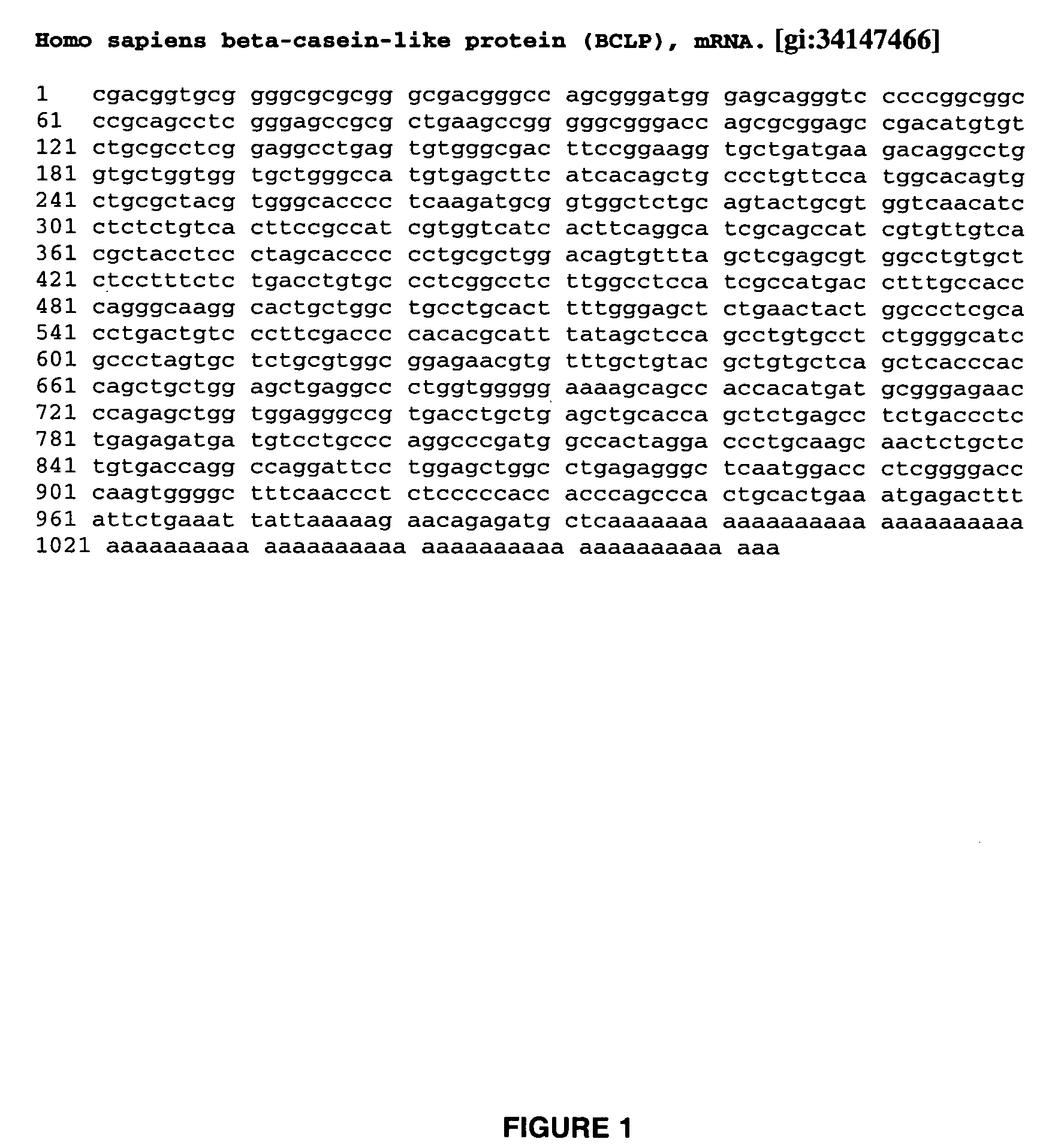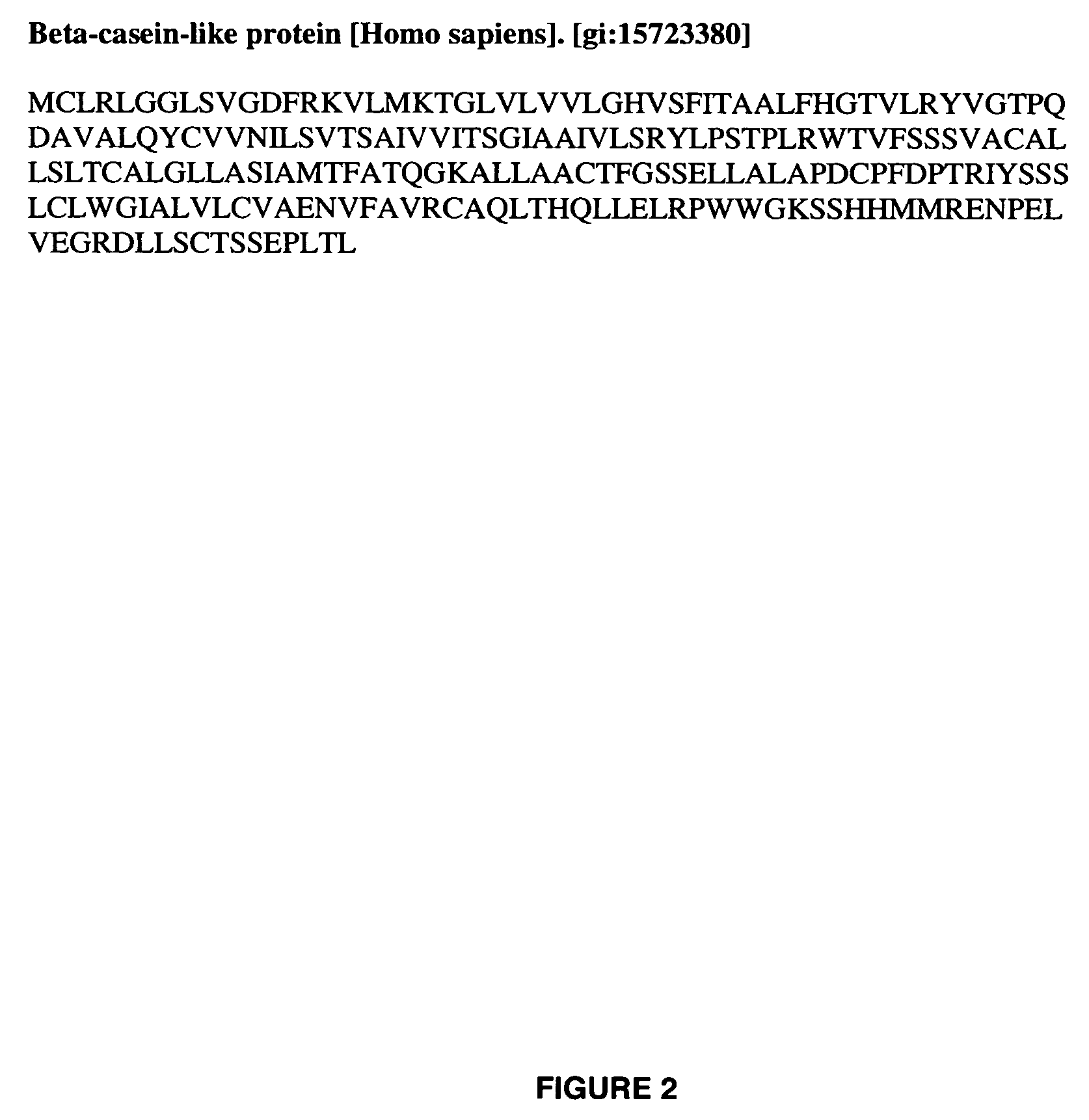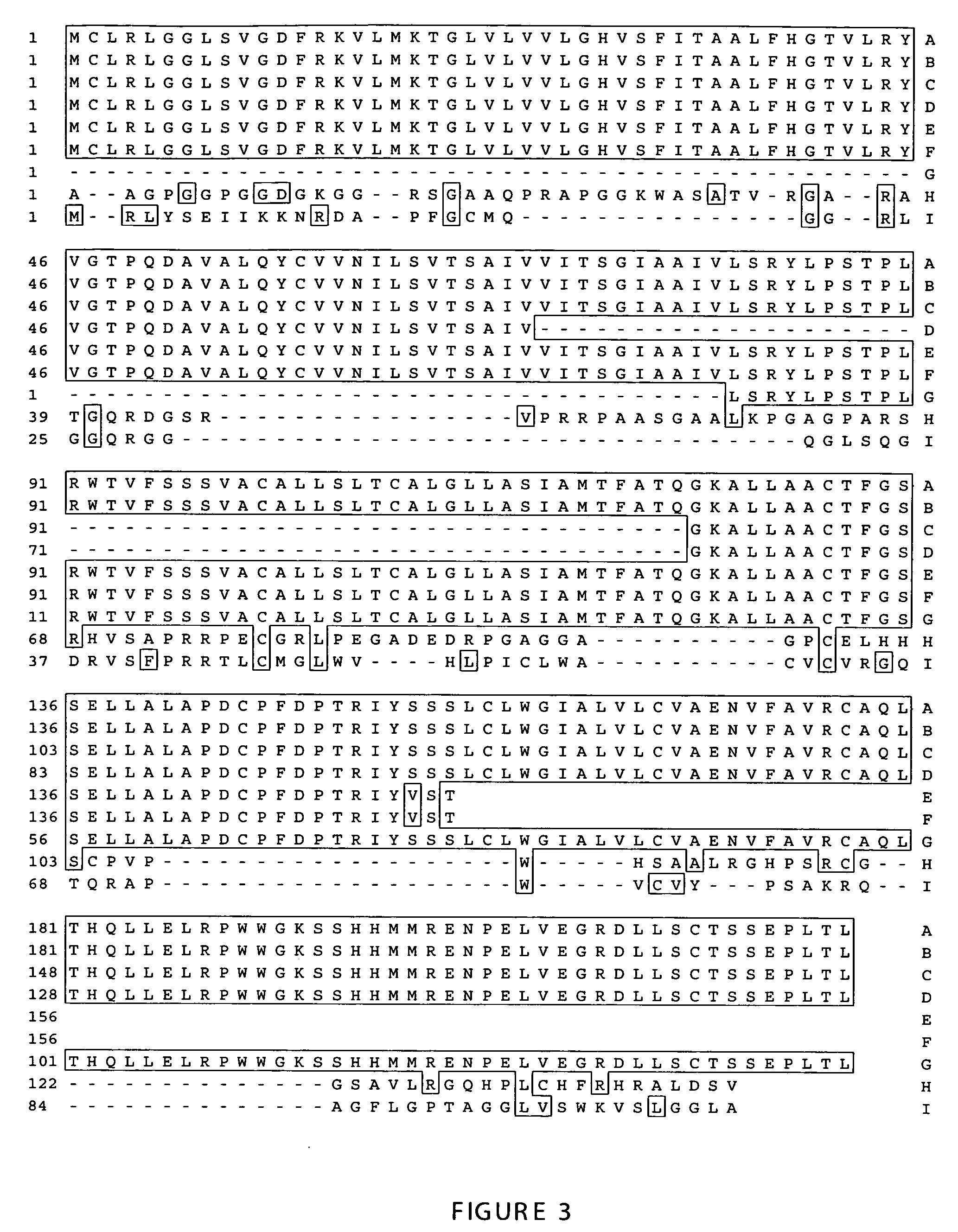Methods of therapy and diagnosis using targeting of cells that express BCLP polypeptides
a technology of bclp and polypeptide, which is applied in the direction of peptide/protein ingredients, antibody medical ingredients, instruments, etc., can solve the problems of bclp destroying or inhibiting the growth of bclp-expressing cancer cells, and hindering the deployment of immunotherapy as a treatment option against cancer, etc., to achieve the effect of enhancing the effect of therapeutic agents
- Summary
- Abstract
- Description
- Claims
- Application Information
AI Technical Summary
Benefits of technology
Problems solved by technology
Method used
Image
Examples
examples 1
The mRNA Encoding BCLP is Highly Expressed in Colon Tumors
[0208]FIG. 4 shows the relative expression of BCLP mRNA that was derived from healthy tissues, and from colon tumors from patients.
[0209] Total mRNA derived from the colon tumors (HTB37, CCL233, HTB38, CO8067T, CO7932T, H03-130T, COLON T, CO7413T, H03-128T, H03-134T, H03-132T, H03-126T), tissue adjacent to the colon tumors (CO8067N,CO7932N, COLON N, H03-133N, H03-129N, H03-131 N, H03-135N, H03-127N), and the total mRNA derived from lung, kidney, small intestine, brain, colon, pancreas, adrenal gland, heart, skeletal muscle, liver, and was purchased from Clinomics Biosciences Inc., (Pittsfield, Mass.). The RNA was subjected to quantitative real-time PCR (TaqMan) (Simpson et al., Molec Vision 6:178-183 (2000)) to determine the relative expression of BCLP in human tissues. The forward and reverse primers that were used in the PCR reactions were: 5′ TGGCCCTCGCACCTGA 3′ (forward; SEQ ID NO: 20), and 5′ GGCACAGGCTGGAGCTATAAA 3′ (...
example 2
Production of BCLP-Specific Antibodies
[0212] Cells expressing BCLP were identified using antibodies to BCLP. Polyclonal antibodies were produced by injection of peptide antigens into rabbits. Rabbits were immunized with a peptide that was predicted to be immunogenic, and having amino acid sequence Gly Lys Ser Ser His His Met Met Arg Glu Asn Pro Glu Leu Val Glu Gly Arg Asp (SEQ ID NO: 22) that was conjugated to KLH (keyhole limpet hemocyanin). The rabbit was initially immunized with conjugated peptide in complete Freund's adjuvant, followed by a booster shot every two weeks with injections of conjugated peptide in incomplete Freund's adjuvant. Anti-BCLP antibody was affinity purified from rabbit serum using BCLP peptide coupled to Affi-Gel 10 (Bio-Rad), and stored in phosphate-buffered saline with 0.1% sodium azide. To determine that the polyclonal antibodies were BCLP-specific, an expression vector encoding BCLP were introduced into mammalian cells. Western blot analysis of protein...
example 3
Methods Using BCLP-Specific Antibodies to Detect BCLP in Human Tissues
[0214] Expression of BCLP in human cancerous tissues was detected using the rabbit polyclonal anti-BCLP antibodies described in Example 2. The anti-BCLP polyclonal antibody was optimized for use in immunohistochemistry, and screened across panels containing human tissues. The specificity of binding was ascertained by the ability of the immunogenic peptide to block the binding of the anti-BCLP antibody. The specificity of binding was validated by incubating tissue sections with either 2.5 μg / ml or 5.0 μg / ml anti-BCLP antibody in the presence or absence of immunogenic peptide at molar ratios of 1:1, 1:10, and 1:100 antibody:peptide for 60 minutes at room temperature. Specific binding of the antibody to the BCLP target antigen was detected using the anti-rabbit IgG biotinylated secondary antibody and the reagents contained in the Vectastain© ABC-AP Kit AK-5001. The binding was visualized using the Vector© Red Alkali...
PUM
| Property | Measurement | Unit |
|---|---|---|
| temperature | aaaaa | aaaaa |
| concentrations | aaaaa | aaaaa |
| concentrations | aaaaa | aaaaa |
Abstract
Description
Claims
Application Information
 Login to View More
Login to View More - R&D
- Intellectual Property
- Life Sciences
- Materials
- Tech Scout
- Unparalleled Data Quality
- Higher Quality Content
- 60% Fewer Hallucinations
Browse by: Latest US Patents, China's latest patents, Technical Efficacy Thesaurus, Application Domain, Technology Topic, Popular Technical Reports.
© 2025 PatSnap. All rights reserved.Legal|Privacy policy|Modern Slavery Act Transparency Statement|Sitemap|About US| Contact US: help@patsnap.com



